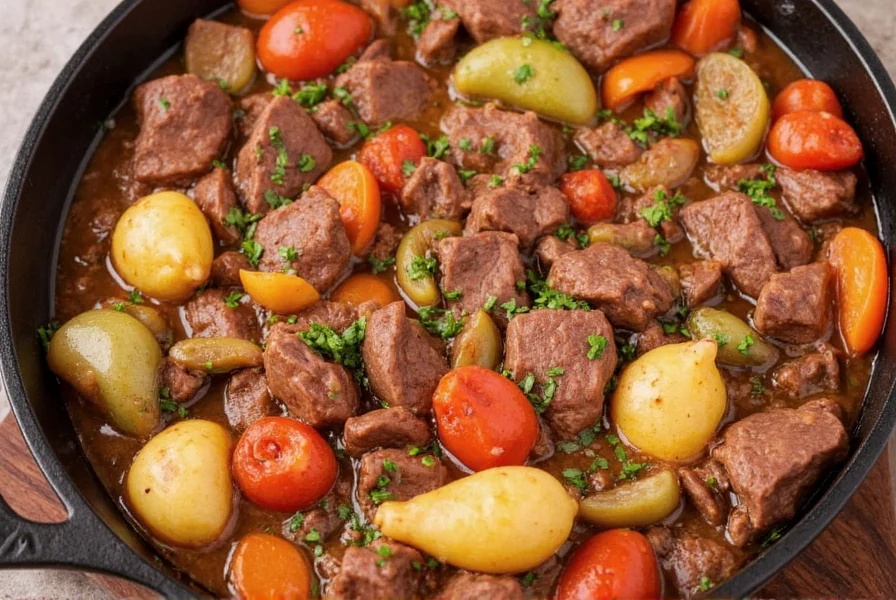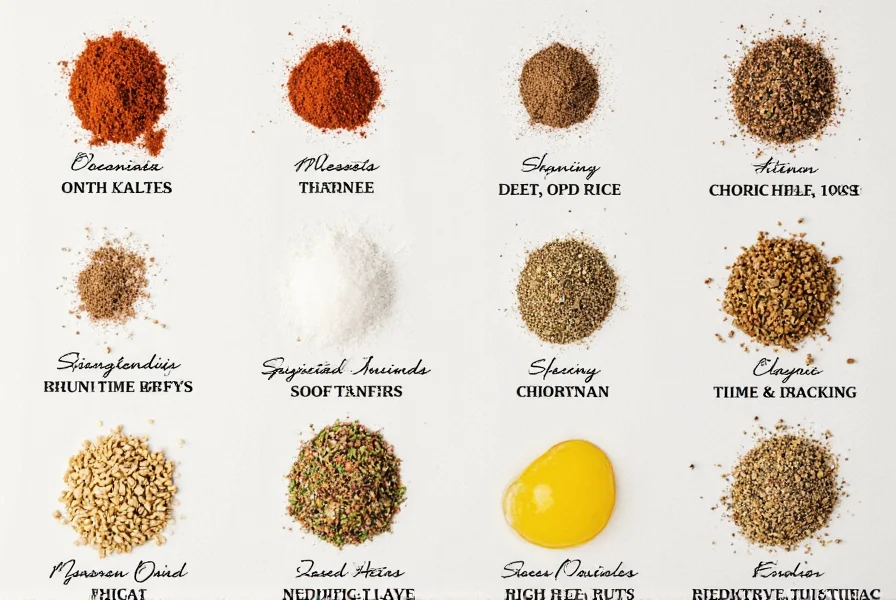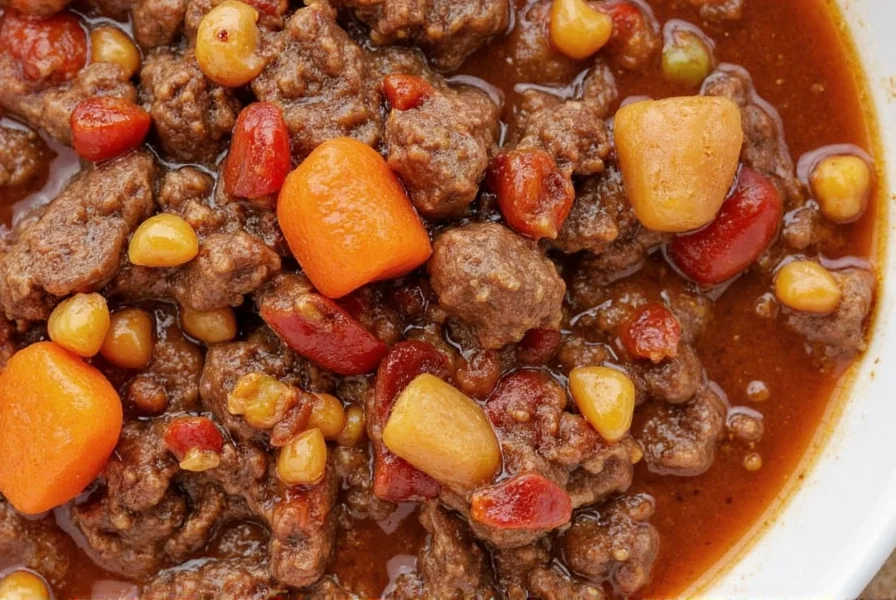What seasonings go in beef stew? The essential seasonings for a classic beef stew are salt, black pepper, onions, garlic, bay leaves, thyme, and rosemary. These form the foundation of flavor and should never be skipped. While salt and pepper are not technically spices, they are fundamental to the dish. Additional herbs and spices like cumin, paprika, and Worcestershire sauce can enhance complexity when used strategically.
Table of Contents
Introduction to Beef Stew Seasonings
Beef stew is a culinary foundation where seasonings transform simple ingredients into a rich, satisfying dish. Unlike one-size-fits-all recipes, authentic beef stew relies on layered seasoning principles that balance foundational flavors with nuanced enhancements. This guide provides evidence-based guidance from culinary experts on selecting and using seasonings to achieve optimal flavor development.
Core Seasonings for Beef Stew
The following five elements form the non-negotiable base for any beef stew:
- Salt: Enhances all other flavors and activates meat proteins. Use 1 teaspoon per pound of beef, adjusting after initial browning.
- Black Pepper: Adds subtle heat and depth. Freshly ground is essential for aromatic complexity.
- Onions and Garlic: Create savory umami base through Maillard reaction during browning. Use equal parts by volume for balanced flavor.
- Bay Leaves: Release subtle earthy notes slowly during long cooking. Remove before serving.
- Thyme or Rosemary: Provide herbal backbone. Thyme offers delicate notes; rosemary delivers robust pine-like character.

These ingredients work synergistically: salt draws out moisture for better browning, while aromatics build flavor layers that permeate the entire dish during slow cooking.
Advanced Flavor Enhancers
Once the core foundation is established, these additions create distinctive regional variations:
| Seasoning | Flavor Profile | Best Use Cases | Culinary Tip |
|---|---|---|---|
| Paprika (smoked) | Deep smoky sweetness | Spanish or Hungarian-style stews | Add with broth to prevent burning |
| Worcestershire Sauce | Umami-rich tang | British-style stews | Stir in during last 15 minutes |
| Cumin | Earthy warmth | Mexican or Southwestern stews | Bloom in oil before adding liquids |
| Tomato Paste | Concentrated acidity | French or Italian stews | Cook 2 minutes to remove raw taste |
Professional chefs recommend starting with small quantities (1/4 teaspoon for dried spices) and tasting before adding more. Overpowering seasonings will mask the beef's natural richness.
Seasoning Techniques & Timing
Mastering these timing principles ensures optimal flavor integration:
- Browning stage: Season meat generously with salt and pepper before searing. This creates flavorful crust through Maillard reaction.
- Early cooking: Add dried herbs (thyme, rosemary, bay leaves) and aromatics (onions, garlic) at the beginning for full flavor infusion.
- Mid-cooking: Incorporate tomato paste and spices like paprika or cumin after vegetables soften. Bloom in oil for 1 minute to release oils.
- Final adjustments: Add liquid seasonings (Worcestershire, soy sauce) in the last 15 minutes to preserve volatile compounds. Always taste and adjust salt at this stage.
Key principle: Season in layers rather than all at once. Each stage builds complexity while preventing flavor imbalance.
Choosing Quality Seasonings
Invest in these quality indicators for optimal results:
- Salt: Kosher salt (Morton or Diamond Crystal) for even distribution. Avoid iodized table salt which can impart metallic notes.
- Pepper: Whole black peppercorns ground fresh. Pre-ground pepper loses 70% of volatile oils within 3 months.
- Bay Leaves: Turkish bay leaves (laurus nobilis) for balanced flavor. Avoid California bay leaves which are overly potent.
- Paprika: Hungarian sweet or smoked varieties. Check for vibrant red color and no musty odor.



Store spices in airtight containers away from light and heat. Replace dried herbs every 6-12 months for peak potency.
Beef Stew Seasoning FAQs
Answers based on professional culinary standards:
What are the essential seasonings for beef stew?
The absolute essentials are salt, black pepper, onions, garlic, bay leaves, and either thyme or rosemary. These create the foundational flavor profile that defines authentic beef stew. Additional seasonings should complement, not replace, these core ingredients.
How much salt should I use in beef stew?
Start with 1 teaspoon of kosher salt per pound of beef during the browning stage. After adding broth, taste and adjust incrementally. Most professional chefs recommend 1.5-2 teaspoons total per pound for balanced seasoning. Remember: you can add salt but cannot remove it.
When should I add spices to beef stew?
Dried herbs and hardy spices (bay leaves, thyme, rosemary, paprika, cumin) should be added during the early cooking phase to allow full flavor extraction. Delicate liquid seasonings like Worcestershire sauce or vinegar should be added in the final 15 minutes to preserve volatile compounds.
Can I use dried herbs instead of fresh in beef stew?
Yes, dried herbs are preferred for long-cooking stews as they withstand heat better. Use 1/3 the amount of dried herbs versus fresh (e.g., 1 tsp dried thyme for 1 tbsp fresh). For bay leaves, always use dried as fresh versions are too potent.
What gives beef stew its rich flavor?
Three key factors: 1) Proper browning of meat creates Maillard reaction compounds, 2) Slow cooking allows flavor molecules to meld, and 3) Layered seasoning technique where each ingredient is added at optimal timing. Worcestershire sauce and tomato paste provide concentrated umami that deepens the overall profile.
How can I fix an under-seasoned beef stew?
First, ensure the stew has cooked long enough for flavors to develop. Then add salt in 1/4 teaspoon increments while simmering. Boost umami with a teaspoon of tomato paste cooked in oil for 1 minute, or add 1/2 teaspoon of Worcestershire sauce. Avoid adding excessive salt at once.
Are there any seasonings I should avoid in beef stew?
Avoid overpowering spices like excessive cayenne, cinnamon, or nutmeg which mask the beef's natural flavor. Also skip pre-mixed "stew seasonings" which often contain fillers and artificial flavors. Remember: balance is key - seasonings should enhance, not dominate, the meat.
Can I make beef stew without certain common seasonings due to allergies or preferences?
Absolutely. For onion/garlic allergies, use asafoetida (hing) powder (1/8 tsp per cup of stew) for savory depth. For salt-restricted diets, focus on umami boosters like mushrooms, tomato paste, and soy sauce (low-sodium varieties). The core technique remains the same - layer flavors strategically.
Conclusion
The perfect beef stew begins with mastering the core seasonings: salt, pepper, aromatics, and herbs. By understanding each ingredient's role and timing, you can create complex, balanced flavors that elevate simple ingredients. Remember: quality ingredients, strategic layering, and tasting throughout the cooking process are the hallmarks of professional stew-making. Start with these fundamentals, then experiment with regional variations to make the dish your own.










 浙公网安备
33010002000092号
浙公网安备
33010002000092号 浙B2-20120091-4
浙B2-20120091-4